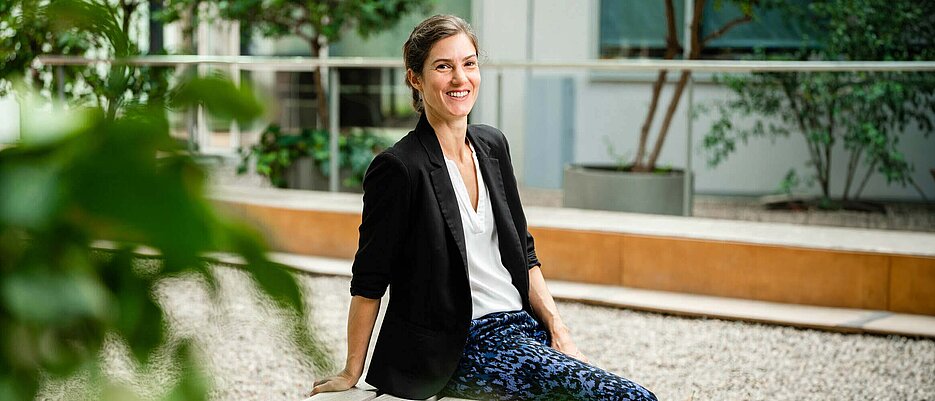Physicist Elena Hassinger has been awarded an ERC Consolidator Grant for her research on superconductors. Hassinger is part of the Würzburg-Dresden Cluster of Excellence ct.qmat.

The research conducted by Elena Hassinger, an expert in low-temperature physics working at the cluster of excellence ct.qmat (Complexity and Topology in Quantum Matter), a joined initiative of the Universities of Dresden and Würzburg (JMU), has always been synonymous with extreme cold. In 2021, she discovered the unconventional superconductor cerium-rhodium-arsenic (CeRh2As2). Superconductors normally have just one phase of resistance-free electron transport, which occurs below a certain critical temperature. However, as reported in the academic journal Science, CeRh2As2 is so far the only quantum material to boast two certain superconducting states.
Lossless current conduction in superconductors has remained a central focus in solid-state physics for decades and has emerged as a significant prospect for the future of power engineering. The discovery of a second superconducting phase in CeRh2As2, which results from an asymmetric crystal structure around the cerium atom (the rest of the crystal structure is completely symmetrical), positions this compound as a prime candidate for use in topological quantum computing. Hassinger plans to extend her search to other quantum materials with similar unusual structural properties, hoping to achieve topological superconductivity at higher temperatures.
ERC Consolidator Grant: €2.7 Million Boost from the European Research Council
The European Research Council has awarded Hassinger €2.7 million for her project “Exotic Quantum States by Locally Broken Inversion Symmetry in Extreme Conditions-Ixtreme.” Over the next five years, she intends to use this funding to further her study of the superconducting “miracle” CeRh2As2 in her Dresden laboratories, uncover related quantum materials, and contribute to a significant breakthrough in topological quantum computing. “If we can confirm the theoretical predictions of topological surface states on my cerium-rhodium-arsenic compound in the laboratory, this could pave the way for the creation of topological quantum bits (qubits). This would be a huge step forward,” Hassinger explains.
Huge Potential for Topological Quantum Computing
Topological qubits are known for their robustness, offering quantum states that are significantly more stable compared to their non-topological counterparts. One of the biggest challenges in current research is developing a method to sustain 1,000 qubits simultaneously. Achieving this would enable quantum processors to complete tasks in a matter of minutes that would take conventional supercomputers years. This is why the brilliant minds at ct.qmat are concentrating on research into topological quantum materials.
Groundbreaking Research under Extreme Laboratory Conditions
In her quest to investigate the unconventional superconductor cerium-rhodium-arsenic, Hassinger first needs a cryostat to cool the material sample to below 0.35 Kelvin (-272.8 degrees Celsius). “This machine costs over a million euros. Negotiations are already underway,” she reveals. When the sample is cold enough, it will be subjected to intense pressure and an ultra-strong magnetic field of up to 18 Tesla, vastly exceeding the 0.1 Tesla field of a typical horseshoe magnet. “Conducting these high-pressure magnetic field measurements could take several months, requiring precise daily adjustments,” Hassinger explains, outlining her experimental approach. Her goal is to closely examine the second superconducting phase of cerium-rhodium-arsenic in order to finally prove that the material is a topological superconductor. If successful, this “miracle material” would not only enable lossless electron conduction but also possess robust topological surface states that could potentially be used in quantum computing operations.
The Cluster of Excellence ct.qmat
The Cluster of Excellence ct.qmat-Complexity and Topology in Quantum Matter has been jointly run by Julius-Maximilians-Universität Würzburg and Technische Universität Dresden since 2019. Over 300 scientists from more than thirty countries and four continents study topological quantum materials that reveal surprising phenomena under extreme conditions such as ultra-low temperatures, high pressure, or strong magnetic fields. ct.qmat is funded through the German Excellence Strategy of the Federal and State Governments and is the only Cluster of Excellence in Germany to be based in two different federal states.







